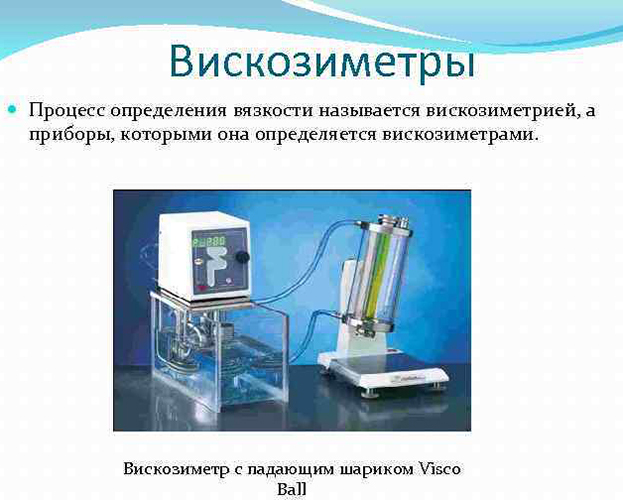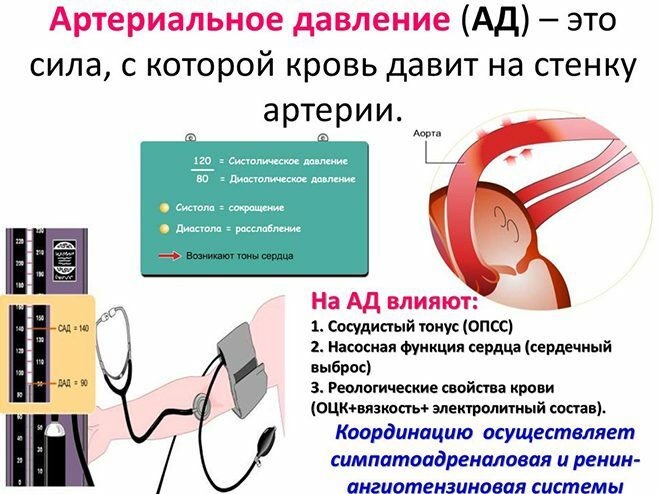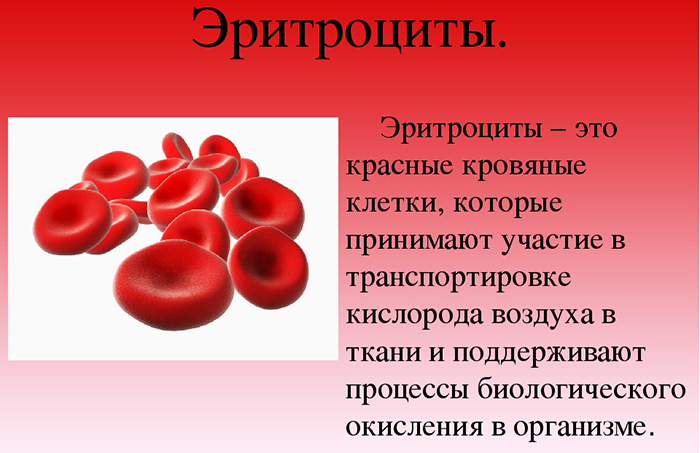One of the most important indicators in the human body is rheological properties, taking into account various changes in blood. This makes it possible to study the viscosity of a whole substance and its resistance, which, in the presence of pathological processes, deviate from the standard indicators.
Record content:
- 1 The essence of the indicator
- 2 What do they depend on?
- 3 Measurement techniques
- 4 How the properties of blood are assessed, the norm
-
5 Violation of blood rheology
- 5.1 Blood viscosity
- 5.2 Sludge Phenomenon
- 6 Preparations for improving blood rheology
- 7 Video about the rheological properties of blood
The essence of the indicator
The rheological properties of blood are such an indicator that determines the various characteristics of the mechanical type in plasma, where the basis is the viscosity of the liquid. All this characterizes the process of serum flow in arteries, veins and vascular tissues.
Since blood is a heterogeneous and heterogeneous medium of the body, its centrifugation is capable of forming plasma in the walls of the test tube, which contains various cellular elements.

Rheological properties take into account the quantitative assessment of erythrocytes, leukocytes and platelets in the blood, which play an important role in the process of gas exchange, stopping bleeding. This also includes the protective function of the body against external influences of toxic elements and bacterial microorganisms.
The basis of rheological properties is the field of physics that studies various features of the flow or deformation of a continuous viscous medium as a non-Newtonian fluid - rheology.
In turn, blood is a typical non-Newtonian liquid, where plasma is determined by its the relation is without uniform elements, and serum is a plasma body in which there are no molecules fibrinogen.
Rheology as a science studies various patterns that indicate the primary properties of blood during its circulation, associated with speed, viscosity and other indicators.
An important indicator characterizing rheological properties is the Reynolds number, which indicates vortex and irregular blood flow with an increase in its linear velocity or the value of molecular structures.
The quantitative assessment of such a transition is determined by the average number equal to 1160 units. Based on the data of the indicator, chaotic movement can occur only in the places of large vessels.

In addition to linear or volumetric velocity, blood flow properties are assessed based on the movement of cellular structures towards the vascular surface, which is determined by the shear stress. This force explains the mechanical direction to the vascular system and is measured in Pascals. The shear rate itself is measured in inverse seconds (s-1).
What do they depend on?
The ratio in the process of the tension itself and the shear rate of the cellular structure of the blood determines the viscosity of the plasma, which is measured by the mPas indicator. This level in whole liquid depends directly on the range, which in medical practice is defined as 0.1-120 k s-1.
If the shear has a rate lower than 100 to s-1, the viscosity is weak, while the achievement of an indicator of 200 s-1 is practically unchanged. The measured quantity at a high ratio is called asymptotic.
The main factors that can influence viscosity are cell deformability, aggregation, and hematocratitis.
Given that there are much more erythrocytes than leukocytes and platelets, this indicator is mainly determined by the quantitative ratio of red elements. It is on this property that the rheological abilities of blood depend.
The formation of a large number of red blood cells is associated with hemodynamic, plasma, mechanical and other factors. Currently, scientists put forward only theories explaining the occurrence of aggregation of the cellular structure of the blood.

The most famous theory is the bridging mechanism, which is determined by the creation of structures from large protein molecules and fibrinogen. In this case, globulins can be adsorbed on the outer surface of the vascular tissue, which causes various shifts in the rheological properties of blood.
At the same time, the mechanism that is responsible for the process of fixation of negative macromolecules on the walls of erythrocytes - fibrinogen and globulin - is not fully understood in modern practice.
There is a strong opinion that the molecular structure is linked to each other due to dispersed van der Waals energy or weakened hydrogen bonds.
Measurement techniques
The rheological properties of blood are an indicator that is investigated using special medical devices called rheometers and viscometers. In medical practice, 2 types are especially common - capillary and rotational.
In the case of a rotary instrument, the plasma rotates at high speed in a centrifuge, which allows the shear flow to be calculated using special hemodynamic formulas.
Capillary devices detect the process of blood flow through a tube of a certain diameter with the simultaneous effect of energy and vacuum pressure differences at each end. In this case, the physiological relationship of blood flow is produced, its basic properties and reactions are assessed.

The most commonly used rotational viscometers, which consist of 2 separate cylindrical bases of different diameters, which are superimposed on each other. If the outer cylinder rotates, then the inner one is connected to the diagnosed device with a dynamometer.
Blood is placed between 2 cylinders, which moves through the device due to its viscosity property. One of the popular modifications of this type of device is a cylindrical base that is not attached to another, but floats in a liquid. Such a device is called the "Zakharchenko apparatus".
The general state of blood flow is strongly influenced by such factors of a mechanical type as the pressure of vascular tissues, as well as the ratio of the speed of movement to a certain indicator. For their complex study, the basic physical laws of hemodynamics are used, which establish a connection between the parameters under study and the properties of plasma.
The movement of the blood itself in the cardiovascular system is possible due to the difference in pressure inside, which makes it possible to move it from a high to a low region. This process is determined by viscosity, resistance of the inner walls of veins and arteries, and suspension stability.
Most of the contraction force of the cardiac system is spent on arterial-type vessels, since their length is greatest in the ratio of the small diameter of the vessel walls.

Arterial resistance directly depends on the available lumen, which is characterized by the influence various indicators in the external environment, including stimuli and reflexes of the central nervous system person. These vascular tissues are called whole body taps.
Otherwise, length is a constant factor, with any vascular lumen or viscosity being related to to specifically specified changes and values, which in medical practice is able to determine the general condition blood flow. All this, together with diagnosed practice, allows the most accurate identification of various pathological changes.
Recently, noticeable progress has been noted in improving rheological instruments for studying biophysical and biochemical processes in the blood. This makes it possible to micro-regulate various exchanges in hemodynamic or metabolic diseases.
At the moment, it is especially important to develop methods for assessing the quality of hemorheology, which could objectively characterize the rheological and aggregation features of blood as non-Newtonian liquids.
How the properties of blood are assessed, the norm
The rheological properties of blood is an indicator of blood flow, which is determined using the physical laws of hemodynamics.

The investigated characteristics include data on:
- Shock volume. It is a quantitative ratio of plasma that enters the vascular tissues during the contraction of the heart. The relative norm of the indicator is about 70 ml.
- Arterial pressure. In medical practice, diastolic is diagnosed - from 60 to 90 mm. rt. Art. and systolic pressure - from 110 to 140 units. The revealed indicator below the described norm indicates the presence of hypotension, while the higher values indicate degenerative processes in connection with arterial hypertension.
- Ejection fraction. It is the ratio of systolic ejection, measured in ml, to the available plasma volume at the end of diastole. It often makes up about 60% of the total mass. If the indicator is 45% or less, the patient is diagnosed with systolic dysfunction, which is also called heart failure. Falling below 40% is determined by a critical health condition.
- Peripheral resistance. This indicator is calculated on the basis of the ratio of the average arterial pressure to plasma ejection in 1 minute. The average level is determined by the diastolic output in full to a third of the pulse. The normative estimate of resistance is 700-1500 units.
A detailed assessment of rheological parameters is determined from specific substances and functional properties of blood, which can give a more accurate picture of the pathological process.
To do this, doctors examine:
| Name | Description, standards |
| Free erythrocyte count | The rate of the indicator is from 3.9 to 5.4 million / μl. The natural level can be lowered with the acute development of anemia, general destruction of the cell structure, malignant tumors and hemolysis. The figure above is defined as a chronic deficiency of oxygen molecules, in the presence of leukemia or serum thickening. |
| Hematocratitis | The norm of the indicator in healthy people is from 0.4 to 0.6. It is characterized by an increase in the presence of heart disease, in particular, a defect. In addition, with various disorders of the respiratory system, malignant tumors, dehydration or a cyst in the kidneys. Decreases due to anemia or over-infusion. |
| Viscosity | The normative level is 23 MPa per s. It can increase with diabetes mellitus, diseases of the gastrointestinal tract and the respiratory system, as well as atherosclerosis and pathological processes in the kidneys. The indicator is influenced by the intake of diuretics, smoking and alcohol. Decreased in the presence of anemia. |
The above indicators can indicate the presence of numerous degenerative changes that significantly worsen a person's life. The most common problem is venous thrombosis, which is often fatal.

In medical practice, in addition to the basic research methods, research has recently begun to be applied biochemical indicators, which, with the help of a detailed laboratory study, allow to identify the main pathologies in the body. The core of testing is to quantify DNA.
Violation of blood rheology
The main indicator affecting the rheological properties of blood is the presence of inflammatory processes in the lung tissue, which leads to subcellular and cellular changes. In turn, concomitant metabolic and hormonal disorders have a significant effect on the regulation of general blood flow.
The development of inflammation in the lungs is often accompanied by a pathological increase in the natural aggregation of red blood cells, which leads to various circulatory disorders. It also affects the occurrence of stasis, contributes to the formation of blood clots.
Based on inflammatory processes, the second most important indicator is the aggregation ability of erythrocytes, which indicates a deterioration in the rheological state of the plasma. With an inflammatory nature, the amount of harmful substances in the human body sharply increases, including protein structures and suspension fluid.
Additional factors that determine the functional characteristics of the blood:
- the number of protein structures;
- cellular form;
- speed of movement through the bloodstream;
- temperature of blood vessels and veins;
- quantitative or percentage ratio of plasma to erythrocytes or other cells.
Violations of the rheological properties of blood are characterized by a change in the state of the suspension and the viscosity of the substance. Such degenerative processes can be general - in the presence of a shock state or a weak cardiovascular system, as well as local, in the case of an inflammatory process or stagnation in the veins.
The rheological indicator determines the quality of the supply of nutrients, oxygen and other useful microelements to the cellular structure of the blood. All this negatively affects the body as a whole.
Blood viscosity
The slowing down of blood flow is characterized by an incorrect arrangement of red blood cells in the plasma. If under normal conditions, they are localized along the vascular walls, then in the presence of changes - in different planes. This lowers the overall blood flow.
In the presence of pathological processes, the cardiovascular system requires much more effort to move blood through the arteries. Measurement of viscosity is determined by a special indicator of hematocrit, which is related to the division of the cell structure by the total volume of serum.
The natural state of blood viscosity is 55% plasma to 45% red blood cells. The viscosity of a healthy organism is 0.45 units. The higher this indicator, the less rheological blood is considered.
The level of viscosity itself is influenced by dehydration, severe bleeding or increased plasma dilution, for example, in the presence of intensive infusion-type treatment. During the cooling process, the hematocrit can increase more than 2 times.
Sludge Phenomenon
In case of disturbances in the stability of the suspension liquid, a reduced functionality of erythrocytes is observed, because of which the blood can split into a liquid substance plasma and a certain clot of leukocytes and platelets.
This property is determined by a kind of unification and gluing of the cellular structure, which is called "sludge". A similar phenomenon is characterized by increased blood density, which leads to various circulatory disorders.
The main factors contributing to the development of blood separation:
- stagnant processes in the venous, vascular or arterial walls;
- insufficient blood circulation, which occurs due to the weakness of the cardiovascular system;
- arterial spasms or blockage;
- inflammatory processes in vascular tissues;
- the presence of allergic irritants;
- blood diseases characterized by an excess of cells;
- malignant or benign tumors;
- pathology of cellular energy in the presence of a general imbalance of electrolytes;
- high content of protein structures in the blood.

The sludge phenomenon leads to various pathological processes in the plasma, including a decrease in its velocity, up to the stopping of the process. In this case, the direction of the blood changes from direct to turbulent, which contributes to the turbulence of the flow. Due to the large number of different clusters, a general failure of arterial and venous vessels often occurs.
With regard to tissue processes, the transport properties of oxygen and other micronutrients can be impaired, including a slowdown in overall metabolism. In addition, the regenerative function of cells is significantly impaired in the presence of damage.
Preparations for improving blood rheology
The rheological properties of blood is an indicator that can be improved by taking various medications.
In order to facilitate the movement of the cell structure in a liquid in the presence of high viscosity, the following means are used:
- Hemodilution or dilution of blood serum by transfusion of plasma-substituting substances using Gelofuzin, Refortan, Stabizol.
- Anticoagulant therapy with drugs Fraxiparine, Heparin, Klesan or Fenalin.
- Medical antiplatelet agents - Ipaton, Aspirin, Plavix, Kurantil.

In addition to drug treatment, plasmapheresis is used, which allows you to eliminate the excess amount of protein structures in the plasma, which improves the suspension stability of erythrocyte cells. Ultraviolet blood irradiation is also often used.
Geodynamic and rheological properties are the most important indicators that determine not only the characteristics of the blood, but also the state of health of the whole organism. You should pay close attention to the level of rheology in the blood, which will reveal pathological changes at an early stage. This makes it possible to eliminate many diseases without complications for further life.
Video about the rheological properties of blood
All about the rheological properties of blood and their improvement:



